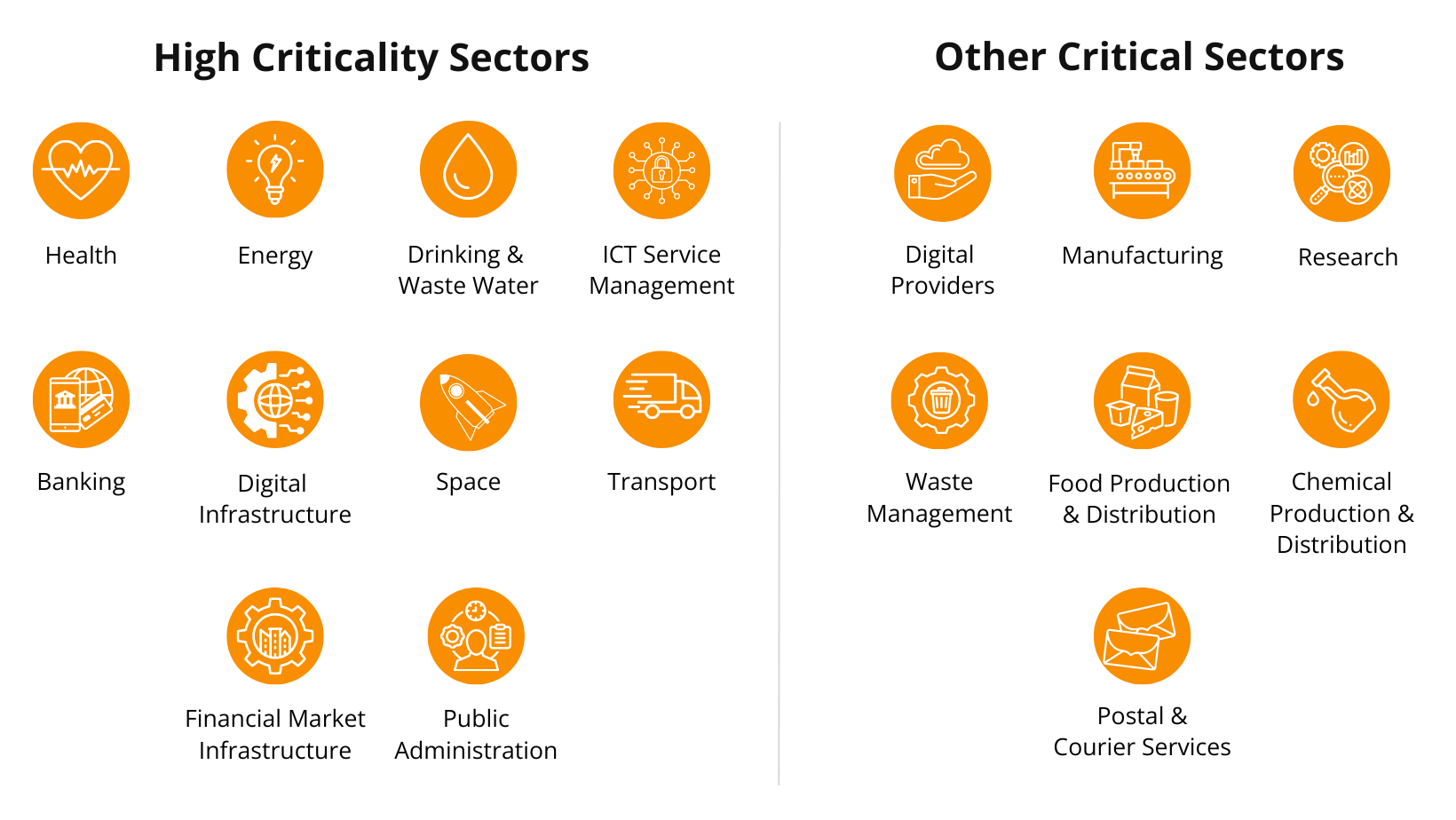The Network and Information Systems (NIS) Directive, introduced by the European Union in 2016, represented a major milestone in creating a unified cybersecurity framework across member states. However, with the rapid evolution of cyber threats and advancements in technology, the need for an update became clear.
Enter NIS2 , the enhanced directive that comes into effect on 17th October 2024.
In this blog post, we’ll delve into the key differences between NIS and NIS2, their implications for organisations, and the advantages of transitioning to the new directive.
Overview of the NIS and NIS2 directives
The original NIS Directive was implemented to improve the cybersecurity resilience of essential services within the EU. Its primary focus was on ensuring that operators of essential services (OES) and digital service providers (DSPs) took adequate measures to protect their systems against cyber threats. This included sectors such as energy, transport, banking, and healthcare.
NIS2, the updated directive, builds upon this foundation by addressing the gaps and challenges identified in the original directive. Its primary purpose is to further enhance the overall cybersecurity posture across the EU, ensuring that the new, more comprehensive requirements are met by a broader range of sectors and organisations.

|
| Image 1: Sectors affected by NIS2 |
Introduction to NIS2
NIS2 is designed to adapt to the ever-changing cybersecurity landscape. It introduces stricter security requirements, expands the scope to cover additional sectors, and enforces more rigorous risk management and reporting obligations.
The directive aims to create a higher standard of cybersecurity across the EU, making it more difficult for cybercriminals to exploit weaknesses in critical infrastructure and digital services.
Assess your NIS2 Readiness
Key differences between NIS and NIS2
| NIS | NIS2 | |
|---|---|---|
| Scope | The original directive focused on a limited number of sectors deemed critical to the economy and society, such as energy, transport, and healthcare. | The scope is significantly expanded, now encompassing additional sectors like public administration, space, postal and courier services, and manufacturing of critical products. This expansion means that more organisations across different industries are now required to comply with the directive. |
| Security requirements | The new directive introduces more detailed and stringent security measures, including robust risk management practices, encryption, multi-factor authentication, and regular security assessments. These measures are mandatory, ensuring a more uniform approach across the EU. | The new directive introduces more detailed and stringent security measures, including robust risk management practices, encryption, multi-factor authentication, and regular security assessments. These measures are mandatory, ensuring a more uniform approach across the EU. |
| Risk management | Risk management was primarily focused on the protection of information systems without a standardised approach. | Risk management under NIS2 is more comprehensive, requiring organisations to adopt a risk-based approach that includes not only the protection of systems but also the identification and mitigation of risks throughout the supply chain . |
| Incident reporting | Incident reporting under NIS was required but lacked clear guidelines on timelines and the level of detail needed. | NIS2 mandates that significant cybersecurity incidents must be reported within 24 hours of detection. Organisations are required to provide an initial impact assessment and follow up with detailed reports as more information becomes available. |
| Supply chain security | The original directive did not place significant emphasis on supply chain security. . | NIS2 introduces specific requirements for assessing and managing risks in the supply chain, recognising that vulnerabilities can often arise from third-party providers. |
| Governance | Governance structures under NIS were less defined, leading to varying levels of top-level involvement in cybersecurity across organisations. | The new directive places a strong emphasis on governance, requiring senior management to take an active role in cybersecurity matters. This includes accountability for compliance and the allocation of adequate resources to ensure robust cybersecurity measures. |
Organisational implications
The transition from NIS to NIS2 will have significant implications for organisations. Those previously unaffected by NIS may now find themselves within the scope of NIS2, requiring them to adopt new cybersecurity measures. For organisations already covered by NIS, the enhanced requirements will necessitate a thorough review and likely an upgrade of their existing cybersecurity practices.
Organisations will need to invest in more advanced cybersecurity tools and processes, enhance their risk management strategies, and ensure that they have the capability to meet the strict incident reporting requirements. Additionally, senior management must be prepared to take a more active role in cybersecurity governance.
Steps to transition from NIS to NIS2
- Conduct a gap analysis: Assess your current cybersecurity measures against the new NIS2 requirements to identify areas that need improvement.
- Expand risk management practices: Incorporate supply chain security into your risk management strategy, and adopt a more comprehensive, risk-based approach.
- Enhance incident response capabilities: Ensure your organisation is capable of detecting, reporting, and responding to incidents within the 24-hour timeframe required by NIS2.
- Strengthen governance structures: Involve senior management in cybersecurity decision-making and ensure that adequate resources are allocated for compliance.
- Train your employees: Provide cybersecurity training to ensure that all employees are aware of their roles and responsibilities under the new directive.
- Engage with third-party providers: Assess and manage risks associated with your supply chain, and ensure that your partners are also compliant with NIS2 requirements.
Download Your Free 10-Step NIS2 Compliance Plan
Benefits of adopting NIS2
Adopting NIS2 offers several benefits beyond mere regulatory compliance. By enhancing your organisation’s cybersecurity posture, you reduce the risk of costly data breaches and operational disruptions. Improved incident response capabilities can minimise the impact of cyberattacks, and a more robust risk management strategy ensures long-term resilience.
Moreover, NIS2 compliance demonstrates a commitment to cybersecurity, which can enhance your organisation’s reputation with customers, partners, and regulators. By adopting the directive, you position your organisation as a leader in cybersecurity, which can be a competitive advantage in today’s increasingly digital marketplace.
The shift from NIS to NIS2 offers a critical opportunity for your organisation to boost its resilience and enhance security practices.
Take proactive steps now—complete our quick questionnaire to evaluate your current cybersecurity measures and understand how well-prepared you are for the new NIS2 requirements. By assessing your compliance today, you can better position your organisation to meet regulatory demands and defend against evolving cyber threats.
Assess your NIS2 Readiness
If you would like further information on how Secora Consulting can assist you in aligning or evaluating your alignment to NIS2 , please get in touch by filling out the form below 👇.

